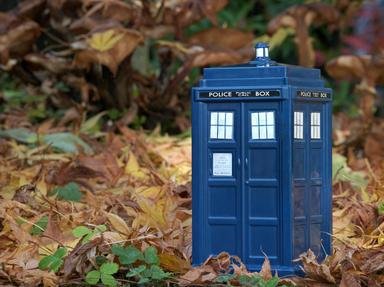Quiz Answer Key and Fun Facts
1. As the very first "Doctor Who" episode, "An Unearthly Child" inevitably contains a multitude of milestones. Let's start with one of the most obvious: in an otherwise unremarkable cameo appearance, who was the very first person the British public saw on screen in the series?
2. The second "Doctor Who" story introduced the first and greatest of the series' alien monsters: the Daleks. What member of the production crew, later a notable director, played the malicious sink plunger that was our first glimpse of the creatures?
3. "Marco Polo" was the first historical "Doctor Who" story that allowed our heroes to interact with real historical figures such as the titular Venetian traveller. What other notable person from history appeared in the story?
4. In its early years, "Doctor Who" was driven by the Doctor's unsuccessful attempts to return his human companions Ian Chesterton and Barbara Wright to 1960s Earth. Which story finally saw the TARDIS return to that setting?
5. Some stories are more blessed with memorable milestones than others. Which of the following notable firsts did NOT occur in the serial "The Dalek Invasion of Earth"?
6. In the early years of "Doctor Who", the hero was as much of a mystery as the series' title implied. In "The Time Meddler", however, the veil of secrecy began to lift when we learned that the story's villainous Meddling Monk had his very own TARDIS! Which "Carry On" star played this nefarious fellow?
7. Some firsts are also onlies! What was the ON-SCREEN title of the first "Doctor Who" story not to include the Doctor or his companions in the cast?
8. During the first two years of "Doctor Who", the TARDIS crew bravely survived meeting all manner of alien monstrosities. This changed in the massive 12-part epic "The Daleks' Master Plan", which saw several companions die in action. Who was the first?
9. From "An Unearthly Child" to "The O.K. Corral", each William Hartnell episode had its own unique title. Which story was the first to abandon individual episode names in favour of having a single overarching title?
10. Some firsts are also lasts! The First Doctor's last outing, "The Tenth Planet", is also, of course, the first story in which the Doctor regenerates. What was William Hartnell's last line of dialogue in this story, the first 'famous last words', so to speak? (The answer may not be as memorable as you might expect!)
Source: Author
bszpak
This quiz was reviewed by FunTrivia editor
guitargoddess before going online.
Any errors found in FunTrivia content are routinely corrected through our feedback system.

